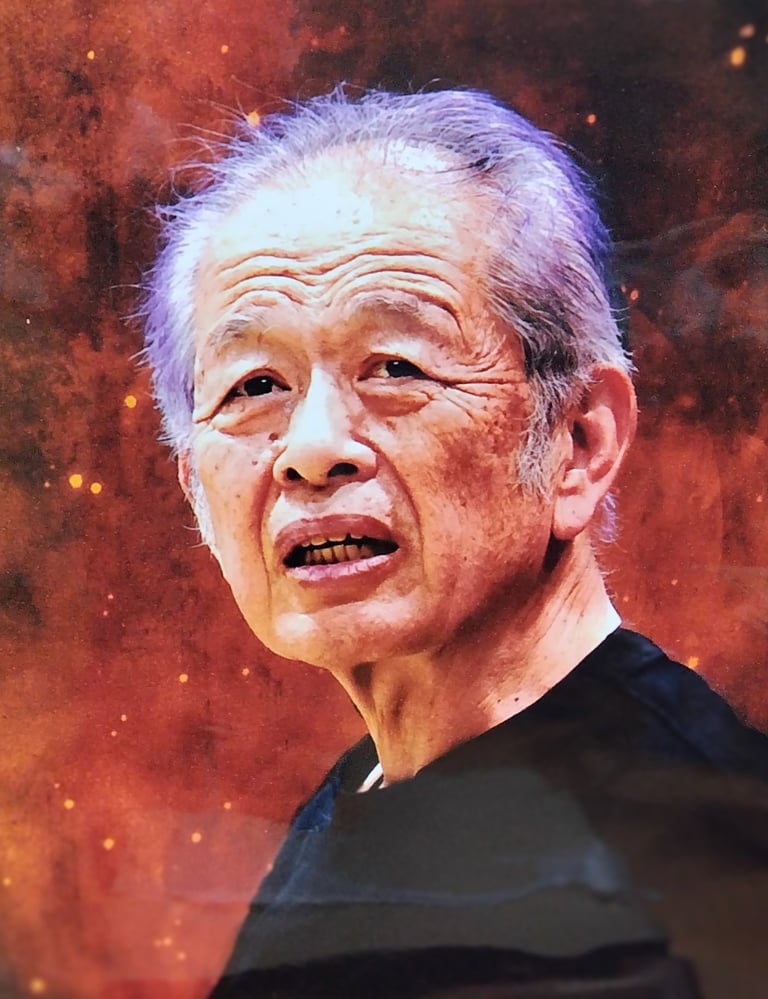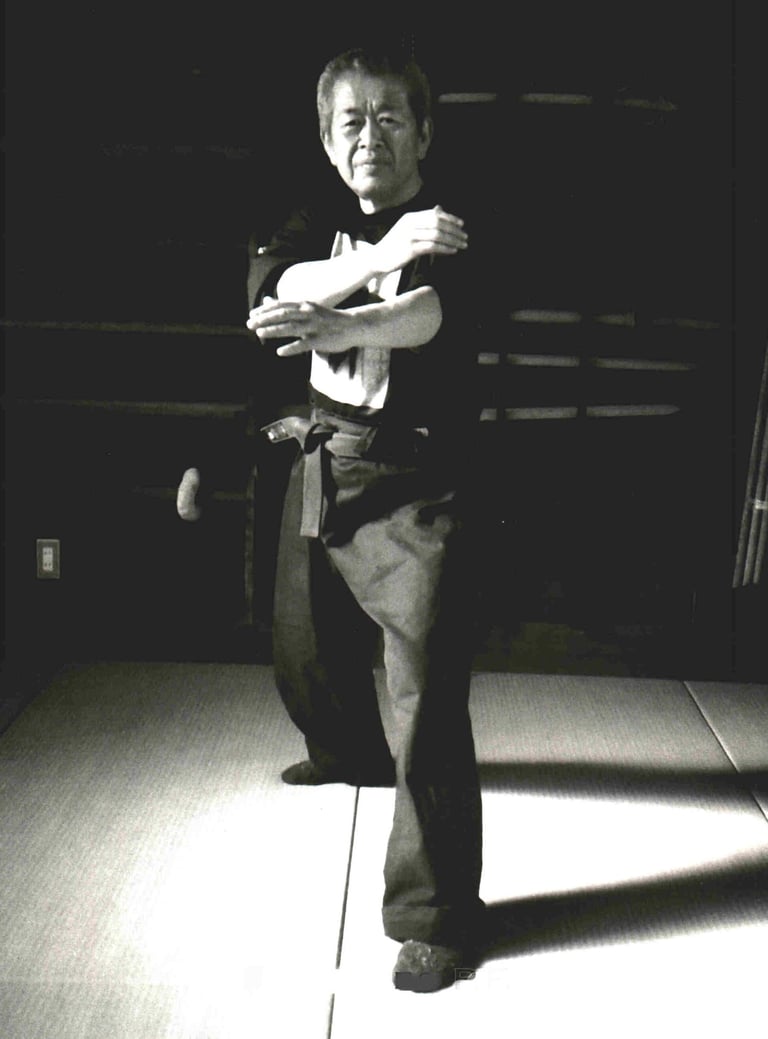Jūdō training with Americans
He was asked if he could train judo with the American soldiers at Yokote Army Base. The Americans, who were bigger and stronger, mastered judo in a few months, which required many years of hard practice for a Japanese. Hatsumi doubted the effectiveness of judo if you could not win against bigger, stronger opponents as a smaller or weaker fighter.
He began to search for proper martial arts and practiced kōbujutsu juhappan with Ueno Sensei. After three years he had mastered the style, and his teacher said that he could not teach him anything more. He advised Hatsumi to go to Nara and find a capable teacher.
Meeting Takamatsu
When Hatsumi was 26 years old, he met Takamatsu Toshitsugu, who was called Moko no Tora (Mongolian Tiger).
In taijutsu, you can defeat a physically superior opponent with movement and distance.
From then on, Hatsumi traveled ten hours a week across the island of Honshū to his master for 15 years. He left Noda on Friday night, stayed with his master over the weekend and trained with him. Sunday night he left him again and made the long way back to reopen his practice on Monday morning.
The Sakki test of Takamatsu
Hatsumi relates that one day his master asked him to sit down and close his eyes. Then he left the room. After several hours, Hatsumi felt a heavy pressing force from behind and saw in his mind's eye a body split in two. Intuitively, Hatsumi performed a roll to the side. At that moment, he heard his teacher say, "Well done, you've done it, you can now open your eyes". The master had approached silently from behind with a sharp sword and had performed a blow.
After passing the sakki test, Takamatsu gave him the menkyōkaiden of the 9 warriors Ryūha. A year later, Takamatsu Sensei died. Before that, he told Hatsumi that he had taught him everything he knew, and that he had repaid his master's for their kindness.
He decided that Hatsumi was the most capable of his students and should therefore continue the legacy. Hatsumi became the new soke.
The founding of the Bujinkan
In honor of his teacher, Hatsumi named his dojo the Bujinkan (Divine Warrior) Dojo. At first, the dojo was in his house. Later, as word spread and his organization grew, people would travel from around the World to learn from him. In 1997, he built a new honbu dojo. In 2015, the honbu was relocated to the current location.
Hatsumi's retirement
Hatsumi sensei announced his retirement in 2018 and stepped down from an active role in the dojo. In 2019, he passed the schools on to several of his direct students so that they can carry those arts into the future.
Tetsuji Ishizuka - Gyokko Ryu Kosshijutsu (29th Successor)
Yukio Noguchi - Koto Ryu Koppojutsu (19th Successor)
Norio Sakasai - Takagi Yoshin Ryu Jutaijutsu (18th Successor) & Gikan Ryu Koppojutsu (16th Successor)
Yoshio Iwata - Kukishinden Ryu Happo Bikenjutsu (29th Successor)
Toshiro Nagato - Shinden Fudo Ryu Dakentaijutsu (27th Successor)
Takumi Tsutsui - Togakure Ryu Ninpo Taijutsu (35th Successor)
Kōji Furuta - Kumogakure Ryu Ninpo (15th Successor)
Jun'ichi Kan - Gyokushin Ryu Ninpo (22nd Successor)
These new Soke continue to teach at the honbu (headquarters) dojo in Japan, and travel around the World for Taikai (seminars). The passing on of these Soke-ship titles only apply to the individual ryu-ha and do not designate anyone as the head of the Bujinkan. Even though he retired from teaching, Hatsumi sensei is still viewed by most to be the 'Official Head' of the International Bujinkan Dojo until such a time when a successor is named.
About Hatsumi Masaaki


The birth of Hatsumi Yoshiaki
Dr. Hatsumi Masaaki was born Hatsumi Yoshiaki on December 2, 1931 in Noda, Chiba Province. He later changed his first name to Masaaki at the suggestion of Takamatsu sensei. Other names used by Hatsumi are: Toratsugu, Tetzusan and Hisamune. At the age of 7, Hatsumi Kendō learned from his father. He also trained in Aikidō, Jūdō and Karate. At school, Hatsumi practiced gymnastics and boxing, and was captain of the soccer team. He practiced dance, which helped him learn Budō. In high school, he continued boxing and practiced Jūdō. He also learned dramaturgy and theatre sciences.
Theatre Studies and Osteopathy
Hatsumi graduated from Meiji University in Tokyo with a degree in theater studies and osteopathy. He then founded a practice for osteopathy. While at university, he obtained the 4th dan in Jūdō, which was rare at his age.




